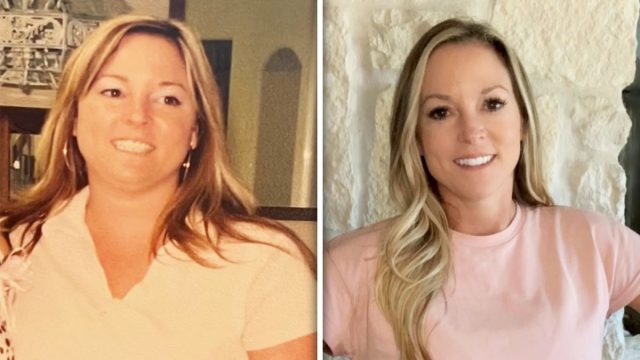She Lost 50 Pounds in Her 50s with These 6 "Silly" Hacks

Are you trying to lose weight fast? According to one expert, some unexpected habits can help you accelerate fat loss. Amy Lynn is a fat loss coach who has lost over 50 pounds in menopause and helps other women do the same. In a new social media post, she reveals some outside-the-box habits that enabled her to lose weight in her fifties. "These 'silly' little hacks might sound random… but they work. Like, actually move-the-scale work. Here's why each one helps with fat loss — especially if you're over 40 and your hormones are giving drama," she writes.
Add Sea Salt to Your Water
Her first hack is to add sea salt to your water. According to Lynn, it "helps with hydration, adrenal support & electrolyte balance. "If you're chronically tired and craving salty snacks, this is for you."
Go to Failure in Your Final Set
During your workouts, use your last set as an opportunity to go to failure. "Going to failure in your final set helps build muscle (hello metabolism support) and signals your body to burn fat, not muscle," she says.
Eat a Raw Carrot Every Day
Eat a "raw carrot a day," she said. The veggie "helps detox excess estrogen (which is often a hidden reason for stubborn belly fat & mood swings)."
Take a Walk in Nature
She also recommends taking walks in nature. "Lowers cortisol, improves insulin sensitivity, and helps with cravings. Bonus points if you leave your phone at home," she writes.
Take a Shot of Apple Cider Vinegar Before Meals
Next, take a shot of apple cider vinegar before meals. According to Lynne, it "supports blood sugar control and digestion. Less crashing, less snacking," she says.
Do Deep Breathing Exercises
Her last "silly" hack is deep breathing, "literally turns off your stress response and lowers cortisol. And since cortisol is the belly fat storing hormone this is a great hack!" she writes.
Bottom Line: Habit Stack
Her Bottom line? Habit stacking these six things will result in big results. "None of these are magic. But stacked together? They're sneaky powerful." And if you enjoyed this article, take advantage of these 15 Quick Ways to Lose Body Fat Percentage in a Week.




